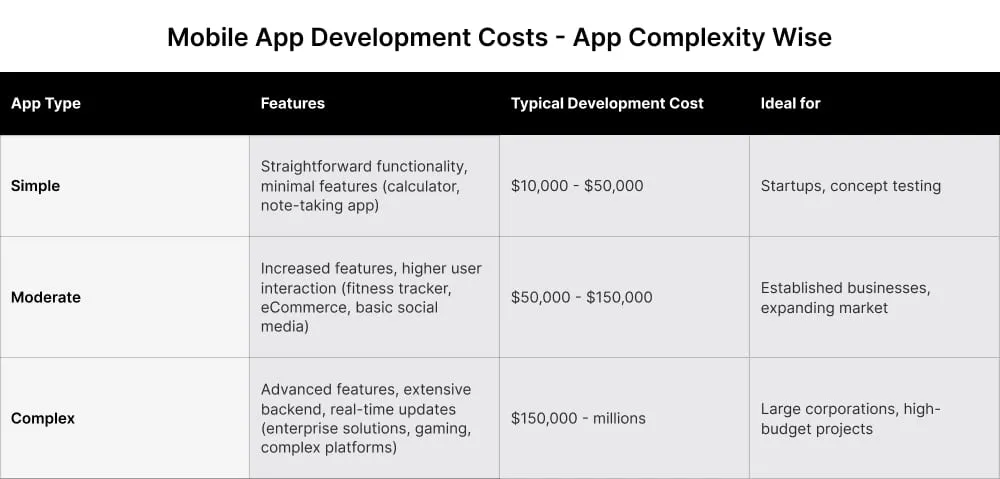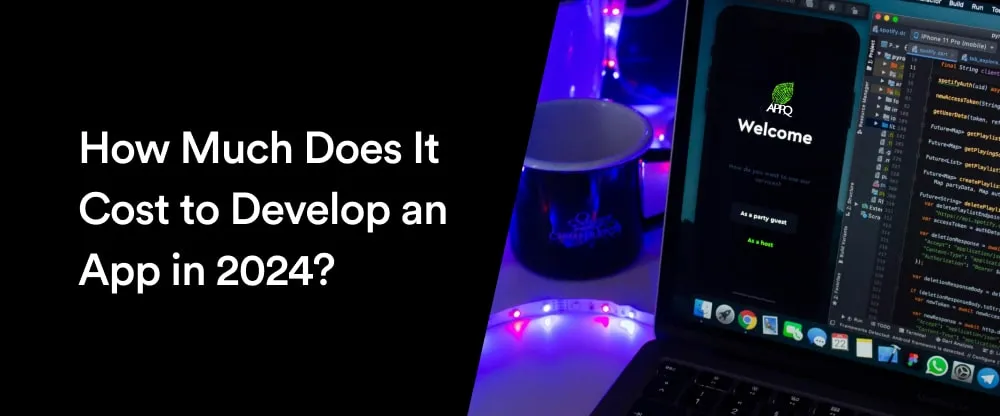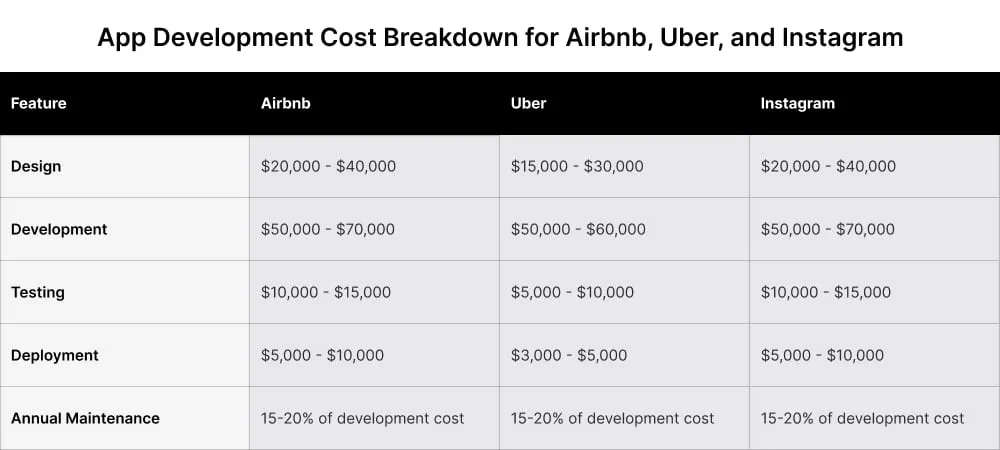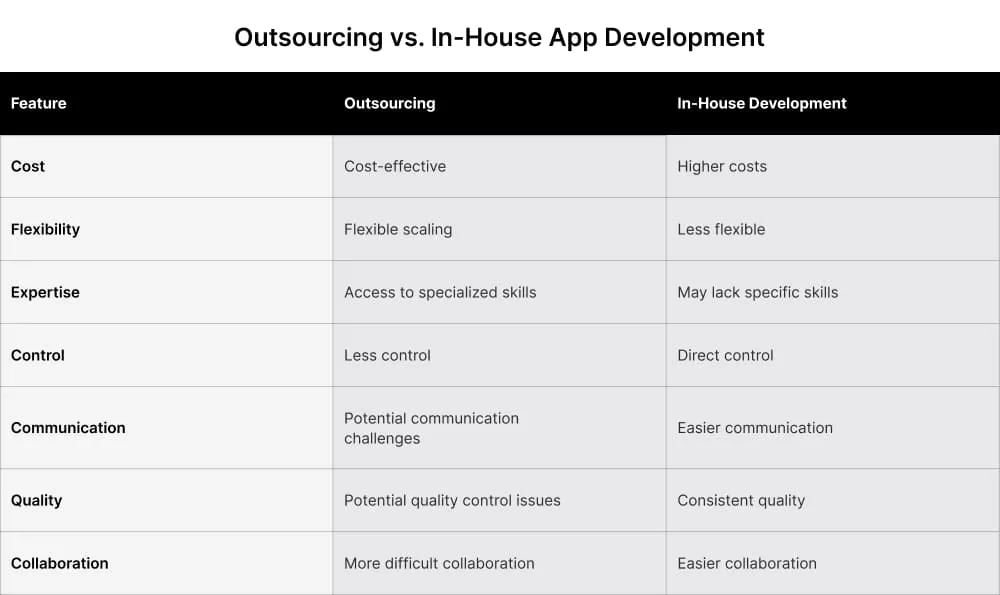



One of the most intriguing questions today is: how much does it cost to make an app? There are more questions like is it ideal to hire any mobile app development agency or go for the top app development companies!
By 2027, the global mobile app market is expected to skyrocket to an incredible $673.80 billion . This striking growth underscores our ever-increasing dependence on mobile apps in everyday life, prompting businesses to invest significantly in app development to maintain a competitive edge.
Mobile apps have become an integral part of our daily lives, changing how we connect, shop, work, and entertain ourselves. Whether you’re a startup with a game-changing idea or a corporate giant looking to stay ahead of the curve, understanding the costs involved in app development is crucial. It’s not just about having a great idea; it’s about knowing how to bring that idea to life without breaking the bank.
That’s where we come in!
We’re about to take a deep dive into the world of app development costs for 2024. We’ll break down the factors that can make your budget soar or save you your precious money. By the time you’re done reading, you’ll have a clear roadmap of what to expect when you embark on your app development journey. So, buckle up and get ready to get insights you need to budget wisely and make informed decisions.
Simple apps are characterized by their straightforward functionality and minimal features. Examples include basic calculators, note-taking apps, or single-purpose utility tools. If you approach any prominent apps development company, their development costs range from $10,000 to $50,000, making them ideal for startups with limited budgets or companies testing a new concept.
Moderate apps offer more features and a higher level of user interaction. Examples include fitness trackers, eCommerce apps, or social media platforms with basic functionalities. Any mobile app development agency can typically charge between $50,000 and $150,000.
Complex apps, such as enterprise-level solutions, gaming apps with 3D graphics, or platforms with extensive backend integrations and real-time updates, fall into the highest cost bracket. These apps can cost anywhere from $150,000 to several million dollars, reflecting the advanced technology, extensive testing, and ongoing maintenance required.

Choosing between iOS, Android, or cross-platform development significantly impacts app development costs. iOS apps are often more expensive to develop due to the higher quality standards and the need to comply with Apple’s stringent guidelines. However, they generally result in higher user engagement and revenue potential.
Android apps, while potentially less costly due to the open-source nature of the platform, require more extensive testing across a wide range of devices. Cross-platform development using frameworks like React Native or Flutter can reduce costs by allowing developers to write a single codebase for both iOS and Android. However, the initial savings may be offset by potential limitations in performance and user experience.
Investing in UI/UX design is crucial as it directly affects user engagement and retention. A well-designed app can differentiate a product in a crowded market and justify a higher development cost. Custom design tailored to a brand’s specific needs and aesthetic typically costs more than using standard templates but offers a unique user experience that can lead to greater user satisfaction and loyalty.
The cost difference between custom design and standard templates can be significant, with custom designs potentially adding tens of thousands of dollars to the overall development budget. However, the investment in a custom design often results in higher user engagement and retention.
Every app needs core features such as user authentication, navigation, and basic user interface elements. The cost of these basic features is relatively low but varies depending on the complexity of implementation.
Advanced features like AI integration, augmented reality (AR), virtual reality (VR), and real-time updates significantly increase development costs. AI functionalities can add anywhere from $10,000 to $50,000, while AR/VR features can increase costs by $20,000 to $100,000 or more.
Additionally, robust backend infrastructure involving servers, databases, and APIs is essential for apps requiring data storage, processing, and real-time communication. This backend setup can add substantial costs depending on the scale and complexity of the app’s requirements.
The location of the mobile app development agency plays a crucial role in the overall cost of app development. Hiring developers in North America generally comes with a high cost but also promises high quality and reliability.
Development rates in Europe are moderate and offer a balance between cost and quality, with many highly skilled developers available. In contrast, Asian apps development companies typically offer the lowest rates, which can be attractive for budget-conscious projects. However, the quality can vary widely, necessitating careful vetting and management to ensure the desired outcome.
When finding the right answer to how much does it cost to make an app, it’s easy to focus solely on the initial build costs. However, there are several hidden expenses that can greatly affect your overall budget.
Understanding the cost breakdown by app type is crucial for planning and budgeting in app development. Different app types require various sets of features and functionalities, which directly impact their overall development costs. Below, we explore the typical features of several app types and provide insights into how these features can influence the costs involved.
E-commerce apps facilitate online shopping by allowing users to browse products, make purchases, and manage orders. The cost of developing an e-commerce app is influenced by several key features:
Social media apps enable users to connect, share content, and communicate in real-time. The costs associated with these apps are driven by features such as:
On-demand service apps connect users with service providers for real-time bookings and deliveries. The development costs are influenced by features including:
Healthcare apps manage health records, book appointments, and offer telemedicine services. Key features affecting costs include:
Educational apps provide resources, interactive lessons, and assessment tools. Costs are influenced by features such as:
Entertainment apps deliver content like music, movies, games, and live streaming. Development costs are influenced by features such as:
Airbnb is a platform that connects people looking for accommodations with those offering spaces for rent. It has revolutionized the travel and hospitality industry by providing a marketplace for short-term lodging.
Development Cost: Approximately $100,000.
Development Time: Around 1,000 hours.
Revenue: Generated $6 billion in 2021, a 78% year-on-year increase.
Valuation: Over $30 billion.
Uber is a ride-sharing app that connects riders with nearby drivers. It has transformed urban transportation with its on-demand service model.
Development Cost: About $80,000 .
Development Time: Approximately 1,200 hours.
Revenue: One of the world’s most valuable companies with a valuation of over $91 billion.
Valuation: Over 118 million active users.
Instagram is a social media platform focused on photo and video sharing. It has become one of the most popular social networks globally, especially among younger audiences.
Development Cost: Starting from $100,000.
Development Time: Around 1,200 to 1,500 hours.
Revenue: Generates significant revenue through advertisements and sponsored posts.

To better understand where your money goes during app development, let’s break down the costs associated with each stage of the process:
This initial stage involves market research, defining app requirements, creating user personas, and outlining the project scope. While it might seem tempting to cut costs here, thorough planning can save money in the long run by preventing costly changes later in development.
The design phase includes creating wireframes, mockups, and prototypes. It also covers user interface (UI) and user experience (UX) design. Investing in good design is crucial for user engagement and can significantly impact the app’s success.
Thorough testing is essential to ensure your app functions correctly across different devices and scenarios. This phase includes unit testing, integration testing, user acceptance testing, and performance testing.
This stage involves submitting the app to app stores, setting up servers, and ensuring everything is ready for launch. While it’s generally less expensive than other phases, it’s crucial for a successful app launch.
Developing an app can be a significant investment, but there are several strategies to manage costs effectively. By focusing on essential features, leveraging modern development tools, and making strategic decisions about your development approach, you can save money while still delivering a high-quality product.
When developing an app, it’s crucial to start with a Minimum Viable Product (MVP). An MVP includes only the essential features necessary to meet the primary needs of your users. This approach not only saves time and money but also allows you to test the market and gather valuable feedback early on. By focusing on the core functionalities, you can launch quickly, reduce development costs, and gradually add more features based on user feedback and demand.
Benefits of MVP:
Leveraging cross-platform development frameworks like React Native or Flutter can significantly reduce costs. These frameworks allow developers to write code once and deploy it across multiple platforms (iOS and Android), saving both time and money compared to native development.
Advantages of Cross-Platform Development:
Deciding between outsourcing and in-house development depends on various factors, including budget, expertise, and control. Each option has its pros and cons, and the choice will affect your development costs.

Use Open-Source Solutions
Incorporating open-source libraries and tools can significantly reduce development costs. These solutions are often free and have large communities that provide support and updates.
Adopting an agile development approach helps in managing costs effectively. Agile allows for iterative development, enabling you to make adjustments based on regular feedback and changing requirements. This flexibility can prevent costly rework and ensures that you are building features that users actually want.
Not all features are created equal. Prioritize features that offer the highest return on investment (ROI). Focus on functionalities that drive user engagement and revenue, and consider postponing or eliminating features that don’t add significant value.
Regular testing and quality assurance (QA) throughout the development process can help identify issues early, reducing the cost of fixing bugs later. Automated testing tools can also save time and resources.
Now that you get the actual answer of how much does it cost to make an app, it’s clear that creating and maintaining an app in 2024 requires thoughtful planning and smart strategies to keep costs in check. By understanding the key factors that drive development expenses, such as the complexity of features, choice of platforms, and design needs, you can better prepare and budget for your project. Embracing cost-saving measures like starting with a Minimum Viable Product (MVP), opting for cross-platform development, and selectively outsourcing tasks can significantly reduce costs without compromising quality. Additionally, using app development cost calculators can provide useful estimates to guide your financial planning. Staying informed, flexible, and proactive throughout the development process will help ensure your app’s success and longevity in a competitive marketplace.
VT Netzwelt stands out as a premier choice among mobile app development agencies, offering a unique blend of expertise, innovation, and client-focused solutions. With over 11 years of industry experience, our skilled team have delivered more than 500 high-quality, cost-effective apps across various industries. We prioritize customer satisfaction through open communication and comprehensive services, from ideation to post-launch support. Our commitment to staying ahead of technological trends, coupled with a proven track record of successful projects, positions VT Netzwelt as a top mobile app development company. Explore our case studies to see the diverse range of projects we have successfully delivered, and schedule a call with us today to discuss how we can bring your vision to life.
Creating an app in 2024 varies based on complexity. Simple apps with basic features are more affordable and quicker to develop. Apps with moderate complexity, like fitness trackers or simple e-commerce platforms, require more features and development time, hence cost more. Highly complex apps, such as those with advanced functionalities like real-time updates or extensive backend integration, require significant investment due to their sophisticated technology and extensive testing.
App maintenance is an ongoing expense, typically forming a significant portion of the initial development cost annually. This includes fixing bugs, updating for new OS versions, server costs, and possibly adding new features. Regular maintenance ensures the app remains functional, secure, and meets evolving user expectations.
Several factors influence app development costs:
Using cost calculators can provide rough estimates based on your inputs, helping you budget and prioritize features.
Reduce development costs by:
Are You Prepared for Digital Transformation?
Healthcare
Building a telehealth app isn’t just coding video calls. It’s about secure, compliant, and user-friendly care platforms. Learn features, costs, and real-world tips to build smarter telemedicine apps.
Devops Consulting
Discover the benefits of DevOps consulting on healthcare mobile apps, from secure and reliable releases to improved compliance and team efficiency
Mobile App Development
Discover how to build a fitness app like MyFitnessPal in 2025 with AI, wearables and smart UX without overspending your development budget.